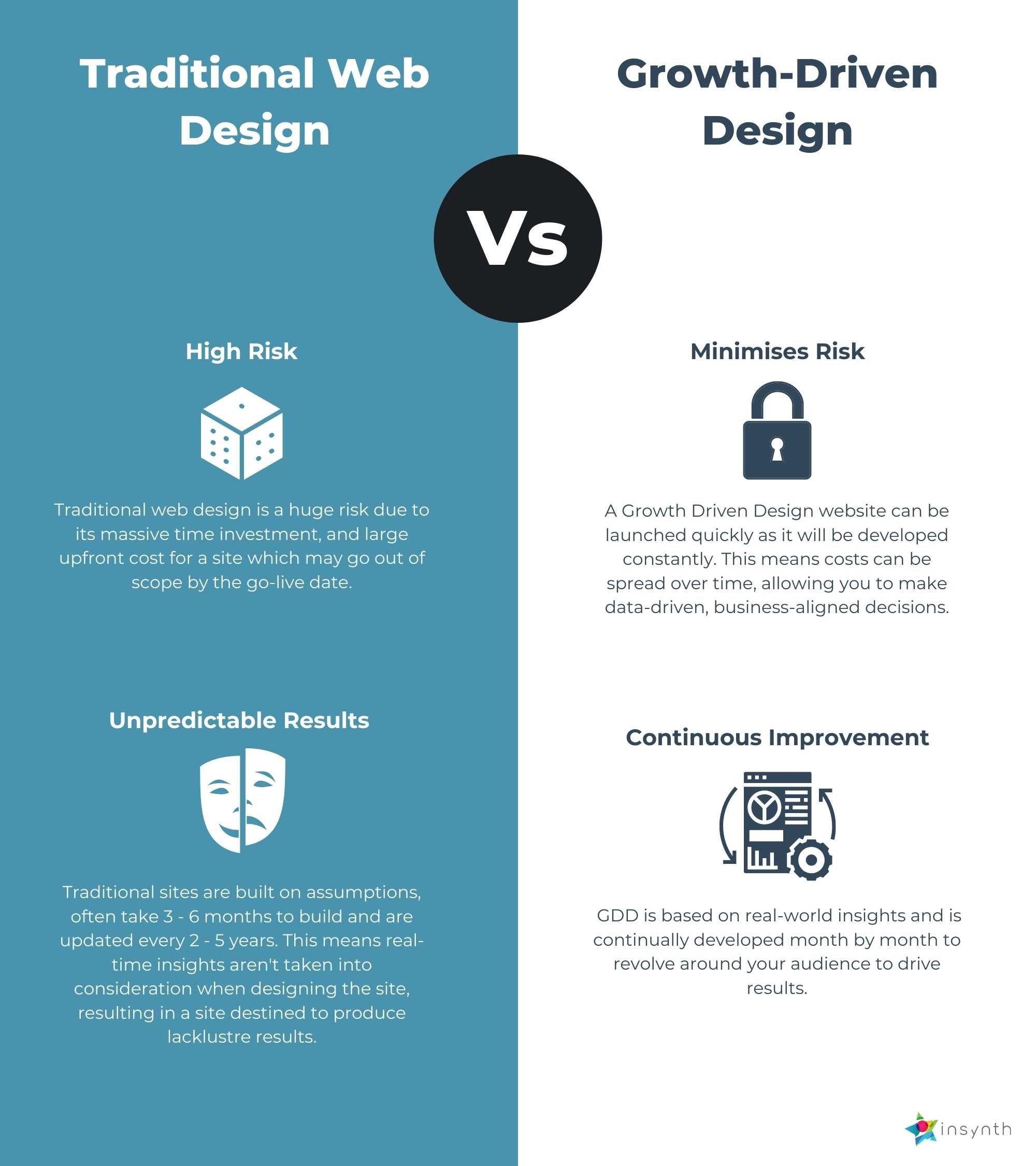2 min read
[Infographic] Traditional Website Design Vs Growth-Driven Design
Dorian Wallace
:
22-Apr-2022 11:15:00
![[Infographic] Traditional Website Design Vs Growth-Driven Design](https://www.insynth.co.uk/hubfs/Website%20Images/Blog%20Featured%20Images/%5BInfographic%5D%20Traditional%20Website%20Design%20Vs%20Growth-Driven%20Design.gif)
If your website is a major headache, you're far from alone.
Many building product businesses experience low lead generation, lack of ROI, and low traffic to their website pages.
The most common solution to these issues is to re-design the website with a non-construction specialist. A process that typically costs £50,000 and takes 6-12 months to be delivered (not accounting for projects that overrun in terms of time and budget). Often with lacklustre results.
It leaves many building product business leaders perplexed. "How do we improve our site quickly and cost-effectively?"
Sound familiar?
This blog comprehensively compares the traditional strategy website design process to the new and fastly growing 'Growth Driven Design' approach. To help you choose the right one for your website.
Traditional Website Design Vs Growth-Driven Design [Infographic]
Traditional Construction Website Design - The Pros
Traditional website design is ancient, and therefore, the process and outcomes are widely understood. This means when you engage with a web agency, they have a strong understanding of project timelines after completing the requirements gathering phase. The pros of this approach include:
- It's a contained, well-defined process with a finish line.
- It's a familiar approach, and therefore, the learning curb isn't dramatic.
Traditional Construction Website Design - The Cons
Building product websites were historically updated every 6-24 months. But, with product safety now paramount, you will need to continually update your website to communicate up to date regulatory compliance, safety ratings, and product information. Traditional web design processes often carry the following cons:
- Significant up-front cost investment
- Time commitment of 6-12 months until the website is complete
- Assumptions of your specifiers' journey could be outdated by the go-live date
- Timelines and project scope often change if your requirements change mid-design
- Your website may not be based on analytics and insights
- Your website will begin going obsolete as soon as it's launched
Growth-Driven Design - The Pros
Growth-Driven Design might be the right solution if your construction product company needs to focus on marketing and website improvements simultaneously, particularly if you have various products with different safety ratings, technical information, and certifications to maintain.
GDD allows you to apportion your budget and time between improving your inbound marketing strategy and website while better understanding your prospect specifiers and customers' preferences.
GDD takes an agile approach to website design. It prioritises monthly improvements to ensure your website never goes out of date. Pros of this approach include:
- You can launch an improved website in a shorter amount of time at a lower cost (50% faster and 50% cheaper, on average).
- You're able to improve your website based on actual data continually
- As the cost is spread over months, there is no large up-front cost
- Endless improvements ensure your website is always up to date
- You're able to gain a more accurate ROI since your design is based on user data
Growth-Driven Design - The Cons
In contrast to traditional website design strategy, GDD is unfamiliar to many companies, which are more familiar with self-contained initiatives. Committing to monthly spending can be surprising to others, who think of web design as a stand-alone, occasional expenditure. The cons of this approach include:
- Without a hard project deadline, it can bother businesses wh prefer self-contained projects
- GDD is a new approach to continuous website improvement and may spring unforeseen challenges
Conclusion
Regardless of whether you believe traditional web design or GDD is right for you, committing to keeping up with your prospect's preferences and expectations while maintaining up to date product information is necessary for today's built environment. We hope this blog has allowed you to make an informed decision on the best website design strategy for your business.
About Insynth
At Insynth we deliver a predictable flow of leads, customers, and specifications for building product brands through our inbound marketing approach, proven to reach a technically demanding audience.
We use the latest marketing techniques such as construction inbound marketing, to equip building product companies to grow sustainability in this era of digital transformation.
As the only HubSpot certified agency to major in construction marketing. We have a proven formula of bringing a variety of functionalities together including CRM Implementation, Web Design, Sales Automation, SEO, and Email Marketing to achieve your ultimate aim: Growing your business and gaining new specifiers and customers.
Book A Free Consultation Today
.


